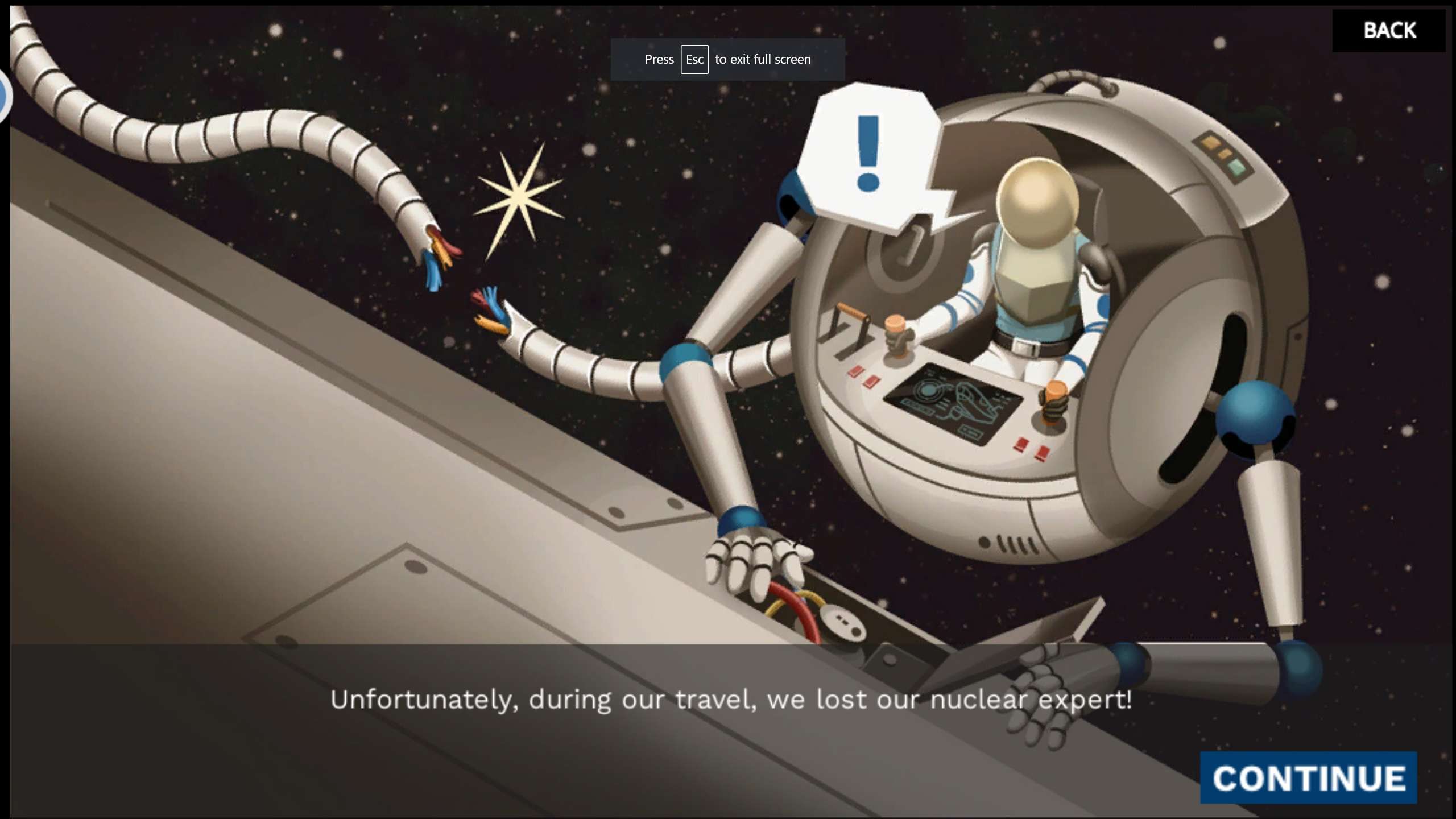Heading 1
Heading 2
Heading 3
Heading 4
Heading 5
Heading 6
Lorem ipsum dolor sit amet, consectetur adipiscing elit, sed do eiusmod tempor incididunt ut labore et dolore magna aliqua. Ut enim ad minim veniam, quis nostrud exercitation ullamco laboris nisi ut aliquip ex ea commodo consequat. Duis aute irure dolor in reprehenderit in voluptate velit esse cillum dolore eu fugiat nulla pariatur.
Block quote
Ordered list
- Item 1
- Item 2
- Item 3
Unordered list
- Item A
- Item B
- Item C
Bold text
Emphasis
Superscript
Subscript
About This Simulation
Fusion is the future of energy and it's up to you to figure out how to harness it. Explore this advanced fusion reactor and learn all of the science needed to have the power of the sun in the palm of your hand.
Learning Objectives
- Demonstrate the conditions needed for fusion to occur
- Demonstrate that the total number of neutrons plus protons is the same both before and after the nuclear process, although the total number of protons and the total number of neutrons may be different before and after.
- Demonstrate that fusion processes release energy in a scale much larger than from chemical reactions and require initial energy for the reaction to take place
About This Simulation
Lab Techniques
Related Standards
- HS-PS1-8
Learn More About This Simulation
Discover the future of energy by activating a fusion reactor. In this simulation you will learn about nuclear fusion. How come it is so difficult to reproduce on Earth? What elements can I create? Where does all the energy come from? With your team's nuclear scientist missing, it's up to you to answer all of these questions.
Bringing the future home!
Your mission is to bring home important knowledge about nuclear fusion from another planet. To understand fusion you will be going through a set of interactive learning activities with animated graphs, simple infographics, and visualizations. Applying this knowledge will help you progress around the lab. You may be stuck lightyears away from Earth!
Fusion in your hands.
Fusion is all about visualizing atoms combining together and how this releases energy. With this simulation, you'll interact with 3D atoms and combine them with your hands. You will even demonstrate Einstein's E=mc2 with a set of nano-sensitive weighing scales!
Restart the reactor. Ahead of you is the reactor, locked behind 3 security questions. As this is a fusion reactor, the questions are all on the topic of nuclear fusion. These questions ensure that if you harness the secrets of renewable energy, you have got to understand it! Think you're up for the challenge?
For Science Programs Providing a Learning Advantage
Boost STEM Pass Rates
Boost Learning with Fun
75% of students show high engagement and improved grades with Labster
Discover Simulations That Match Your Syllabus
Easily bolster your learning objectives with relevant, interactive content
Place Students in the Shoes of Real Scientists
Practice a lab procedure or visualize theory through narrative-driven scenarios


FAQs
Find answers to frequently asked questions.
Heading 1
Heading 2
Heading 3
Heading 4
Heading 5
Heading 6
Lorem ipsum dolor sit amet, consectetur adipiscing elit, sed do eiusmod tempor incididunt ut labore et dolore magna aliqua. Ut enim ad minim veniam, quis nostrud exercitation ullamco laboris nisi ut aliquip ex ea commodo consequat. Duis aute irure dolor in reprehenderit in voluptate velit esse cillum dolore eu fugiat nulla pariatur.
Block quote
Ordered list
- Item 1
- Item 2
- Item 3
Unordered list
- Item A
- Item B
- Item C
Bold text
Emphasis
Superscript
Subscript
A Labster virtual lab is an interactive, multimedia assignment that students access right from their computers. Many Labster virtual labs prepare students for success in college by introducing foundational knowledge using multimedia visualizations that make it easier to understand complex concepts. Other Labster virtual labs prepare learners for careers in STEM labs by giving them realistic practice on lab techniques and procedures.
Labster’s virtual lab simulations are created by scientists and designed to maximize engagement and interactivity. Unlike watching a video or reading a textbook, Labster virtual labs are interactive. To make progress, students must think critically and solve a real-world problem. We believe that learning by doing makes STEM stick.
Yes, Labster is compatible with all major LMS (Learning Management Systems) including Blackboard, Canvas, D2L, Moodle, and many others. Students can access Labster like any other assignment. If your institution does not choose an LMS integration, students will log into Labster’s Course Manager once they have an account created. Your institution will decide which is the best access method.
Labster is available for purchase by instructors, faculty, and administrators at education institutions. Purchasing our starter package, Labster Explorer, can be done using a credit card if you are located in the USA, Canada, or Mexico. If you are outside of North America or are choosing a higher plan, please speak with a Labster sales representative. Compare plans.
Labster supports a wide range of STEM courses at the high school, college, and university level across fields in biology, chemistry, physics, and health sciences. You can identify topics for your courses by searching our Content Catalog.















